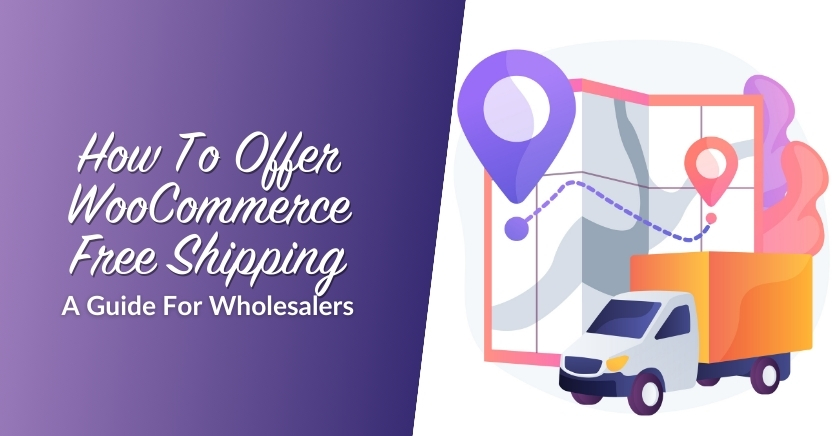How To Create A B2B Ecommerce Customer Journey For Your Business


Whereas businesses would previously stick to brands and partners they had well-established relationships with, they’re now more likely to shop around and turn online to find what they need. Unlike before, when loyalty was a top priority, today, more than 70% of B2B buyers find buying from a website more convenient than talking to a salesperson. To adapt to this shift and stay competitive, there’s more of a need than ever to have a seamless B2B ecommerce customer journey in place.
However, this is easier said than done and this represents a challenge that e-commerce and marketing teams run into regularly. Ideally, you want your B2B ecommerce customer journey to be as easy as that of a B2C experience, however, the buying process is often more complex.
As a result, achieving a seamless B2B ecommerce customer journey isn’t easy and it requires additional work from marketers to make B2B customers’ experiences convenient. It is, however, absolutely worth the extra effort.
Differentiating B2B And B2C E-commerce
It’s important to understand the difference between B2B and B2C E-commerce. A typical B2C customer transaction involves a buyer making a straightforward purchase – such as ordering a product from Amazon.
B2B transactions, however, are more complex deals between businesses and can involve several stakeholders. This could include additional factors such as service agreements, long-term contracts, or customized quotes. As a result, there is typically a lot more negotiation involved rather than adding an item to your basket and paying a set price.
What Is A B2B Ecommerce Customer Journey?
The B2B customer journey map highlights each of the steps that your customer will take during the buying process, from first hearing about your product or service to making a purchase and establishing a lasting relationship. It involves various touchpoints and interactions between your business and the customer.
You can think of it like a road map that guides your customers through the process, culminating in making a purchase. Your e-commerce journey is the well-planned route you want them to take, and each touchpoint acts like a signpost that marks an important step on that journey.
How to Create a B2B Ecommerce Customer Journey
1. Conduct target market research
The basis of a great B2B ecommerce customer journey is really understanding your target market. We’re not just talking about the standard demographics. You want to identify your ideal customers and learn exactly what makes them tick – what are their pain points or frustrations? What gets them excited? What challenges are keeping them awake at night that you could solve?
You can gather direct feedback using surveys or analytics tools. There’s also trusty social media listening where you can find out what people are talking about and the latest wholesale trends. Online forums are a great place to learn more about people’s experiences and their wants and needs. You can even put your detective hat on and check out what the competition is doing well, or what you could do better.
Don’t overlook your current customer either, they could hold valuable insights about your business and how you could improve their experience. You can ask them directly, or collaborate with customer service and sales teams to uncover common queries or complaints.
2. Choose the right ecommerce platform
Not all e-commerce platforms are created equal, and not all of them are equipped to manage the B2B buying process. When choosing the right platform for your business, make sure it can handle the complexity of B2B buying transactions. Finding yourself on a platform that isn’t up to the job isn’t just a headache for you, it could seriously impact your B2B ecommerce customer journey.
Look for platforms that include features important to your business, like bulk ordering or customizable product catalogs. If you want to integrate your eCommerce site with a CRM system, you’ll want to make sure that it is a straightforward process.
3. Create a user-friendly website design
It is essential to have a user-friendly website to make navigation as easy as possible. Make sure to optimize your website so it includes a clear call to action that will guide buyers through the B2B ecommerce customer journey. For example:
- “Explore Our Product Range” (Awareness Stage)
- “Inquire for Bulk Pricing” (Consideration Stage)
- “Customize Your Order” (Decision Stage)
- “Place a Wholesale Order” (Action/Purchase Stage)
It’s important to make sure that the most salient information is easy to find, such as product details or price. You should also add a clearly labeled “Contact Us” section so that customers can see how to reach out if they need further assistance. You might also want to get a business phone number so that you are easily contactable by customers.
4. Implement dynamic pricing and quoting features
Implementing a dynamic pricing strategy can allow you to make offers such as volume discounts or personalized quotes, thereby helping you to cater to the different needs of your B2B customers.
Let’s take the example of an outbound call center platform that provides customer engagement and telemarketing services. They might have different pricing tiers based on the volume of calls, allowing their customers to scale their operations to suit their individual requirements.
For B2B businesses, tools like Wholesale Prices Premium are worth considering. This powerful plugin allows WooCommerce wholesalers to manage wholesale pricing, create exclusive wholesale discounts, implement minimum order quantities, and set dynamic pricing.
5. Provide user account flexibility
There are often multiple decision-makers involved in the buying process during B2B transactions, which only adds to the complexity. To simplify the process you can provide customers with multiple user accounts.
To understand how this can be helpful, consider a B2B business offering Only Domains registration services. In this example, you could set up different accounts with varying permissions based on their job titles. So, the IT manager might have full control over any technical settings, whereas the marketing team only has access to view and register new domains.
6. Streamline order forms and invoice processes
Once you’ve guided your customers through the journey and converted them into buyers, make sure there aren’t any last-moment obstacles blocking their way to completing their order, such as complicated ordering forms or clunky invoicing processes.
You can simplify the purchase process by providing straightforward and intuitive order forms, including fields for your customers to put customized information, like purchase order numbers or specific delivery instructions. This could range from preferences like curbside pick-up to detailed access procedures for secure offices.
Tools like Wholesale Order Form allow you to create one-paged, intuitive order forms tailored for B2B buyers.
You can also streamline the invoice process by making sure you create clear and detailed invoices with consistent formatting and offer digital payment options. To simplify things further, you could explore using invoicing platforms and tools that enable your customers to view and pay their invoices online.
No matter how simple you have made the customer journey, it’s important to make sure they can still easily contact you with any queries they might have. You may want to consider using tools like AI chatbots to quickly answer their questions. You’ll also see AI improving customer experience in your invoicing processes through personal interactions and quick solutions to billing questions.
7. Prioritize data security and regulatory compliance
Trust is everything in these transactions. If your customers don’t trust you then they will not be comfortable with sharing their sensitive information with you, such as their payment details. You will want to use strong security measures, like SSL encryption, and choose trustworthy payment methods for online transactions to make sure that you are keeping their data secure.
Equally important is the need to ensure that your site complies with any specific regulations for your business or industry. It is your responsibility to make sure you stay informed about what they entail. This could involve anything from abiding to data protection laws or any industry-specific rules. Additionally, you need to have a clear and easily accessible privacy policy and terms of service on your website.
8. Use data for insights and optimization
By following a structured framework for creating your B2B ecommerce customer journey you’re off to a great start, but it’s unrealistic to expect to get everything perfect the first time. Keep a close eye on data analytics and customer feedback to see what is working well, or where you could improve things.
You can glean a lot of information about how your customers interact with your website by looking at your data. By analyzing website traffic, you might, for instance, see that many customers visit the site using mobile phones or a remote desktop iPad. However, you may also spot that a lot of these mobile visitors leave the website once they reach the checkout section. After spotting a problem, talking to customers might yield an answer to the problem. For example, it may be that customers are struggling to navigate the checkout process on a smaller screen and when using touch controls.
In response, they make the site more user-friendly for mobile users. They add simple features like larger buttons and make the checkout process more straightforward with fewer form fields for easy completion on mobile devices.
Conclusion
B2B customers expect an e-commerce experience that is as straightforward as purchasing personal shopping online. They also expect easy customization and speedy well-connected processes that allow them to track orders throughout the process.
You can meet these expectations, by making an effort to understand what your customers need from you at each stage of the customer journey. Make sure every step of their experience with your business is optimized to make their lives easier, from providing detailed product information to ensuring a smooth ordering process.
In this comprehensive guide, we’ve outlined how you can create a seamless B2B ecommerce customer journey in 8 key steps. To summarize, let’s review them below:
- Conduct target market research
- Choose the right platform
- Create a user-friendly website design
- Implement dynamic pricing
- Provide user account flexibility
- Streamline order forms and invoice processes
- Prioritize data security
- Use data to optimize
B2B customer journey mapping may take a little extra time and effort, but you’ll soon reap the rewards of higher customer satisfaction, smoother transactions, and long-lasting relationships!
As you move through these steps, you can make things easier by leveraging powerful tools like Wholesale Suite. Our plugins make it easy for B2B wholesalers to bring their wholesale operations online, helping them manage wholesale pricing, streamline bulk ordering with order forms, and capture leads seamlessly.
The post How To Create A B2B Ecommerce Customer Journey For Your Business appeared first on Wholesale Suite.











